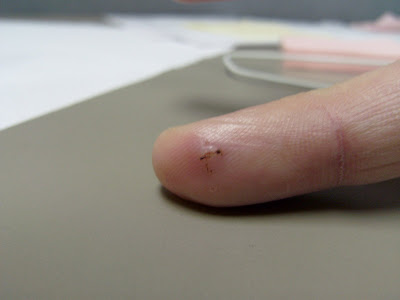Transformers and fluorescent light ballasts - These were the first items I could sense, and produce an even more vivid sensation than before. Passing my finger nearby results in a distinct buzzing vibration. By grabbing at the invisible field I can visualize its shape, more intense in places, less in others.
 Microwave ovens - passing my hand near the running magnetron gives me a unique sensation, though it's not as intense (at least not right now) as I thought it would be. Perhaps my microwave is just very well shielded.
Microwave ovens - passing my hand near the running magnetron gives me a unique sensation, though it's not as intense (at least not right now) as I thought it would be. Perhaps my microwave is just very well shielded.RFID readers - My coworkers must think that I'm crazy. I was pawing curiously at our RFID badge readers and found a weak but interesting sensation. The field itself is more complex than that of a transformer and seems to change shape and intensity over time. It's a weaker field, so I have to concentrate to find it. ***EDIT: Later exploration revealed that I actually cannot feel these devices. It makes sense, too, given the nature of their operation.***
 Brushless fans - the tiny cooling fan of my eeePC is quite noticeable. It's very intense near the center and has a very different frequency than the standard 60 hz that I am becoming familiar with in my daily environment.
Brushless fans - the tiny cooling fan of my eeePC is quite noticeable. It's very intense near the center and has a very different frequency than the standard 60 hz that I am becoming familiar with in my daily environment.I can find the power supply in my LCD monitor by feel, and my roommate's sonicare toothbrush (not surprisingly) is quite intense. I feel I have just scratched the surface of the sensory capabilities of this implant and can't wait to find new, interesting things to feel!




